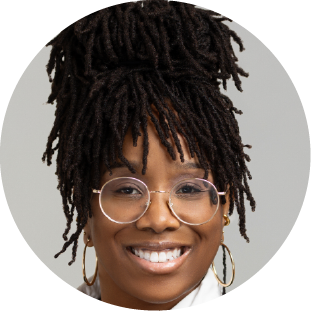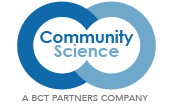At Community Science, capacity building isn’t just about helping organizations function better. It’s about helping them operate from a place of alignment — where strategy, community accountability, and systems awareness all show up with intention. We work to strengthen organizations and the ecosystems they’re part of, not only to make progress, but to move it forward with purpose and precision.
Over the years, we’ve learned that building evaluation capacity often uncovers deeper needs. It reveals misalignments between mission and funding, or disconnects between what’s measured and what truly matters. When done right, capacity building creates space for organizations to reflect, reposition, and reclaim their purpose — and in doing so, they become more strategic and system-aware.
Here’s how we do it.
Step 1: Start with What’s Public — But Don’t Stop There
We begin with what’s visible: websites, leadership bios, program descriptions, etc. What an organization chooses to highlight often reflects where they feel most confident and where they believe they’re making the biggest impact. It’s our starting point — not the whole story.
Step 2: Dig Deeper to Understand the Full Picture
To go deeper, we turn to local outlets, community boards, and behind-the-scenes actions that often tell the real story of an organization’s impact. In Jackson, Mississippi, for example, the Jackson Free Press captures grassroots efforts and partnerships that mainstream media often miss.
We ask:
- Where do the organization’s people show up?
- What issues are they speaking about, even without funding?
- What events or initiatives are they part of because the community needs them?
These breadcrumbs help affirm the organization’s sweet spot — the work they do because it matters — and it leverages their strengths.
Step 3: Name the Sweet Spot
This is the alignment we’re after — the intersection of passion, skill, and real-world impact. When organizations operate from this sweet spot, they’re not only doing good work; they’re positioned for transformative change. This is where capacity building becomes catalytic — not simply filling gaps, but building toward long-term, community-driven solutions.
Step 4: Invite Evaluative Thinking — and Strategic Thought Partnership
Once we’ve built trust, we step into our role as strategic thought partners. Together, we reflect on whether current strategies truly align with long-term goals. We walk backward from desired outcomes and ask: Are these the right strategies to get you there?
For example, an organization might be building a hospitality pipeline because that’s where funding is available. But we ask: Is this aligned with your goal of economic mobility? Do these jobs lead to livable wages? Have you considered what real success would look like — and what it would take to get there?
We’re not simply offering tools. We’re helping organizations question assumptions and make intentional choices based on what success really looks like.
Step 5: Map the Ecosystem and Bridge the Silos
From there, we zoom out. Who else is trying to solve parts of this puzzle? Where are the dependencies, the overlaps, and the gaps?
To make this process tangible, we often use a football field as a metaphor to help teams visualize their place in the ecosystem:
- Are you the quarterback, setting strategy for a coalition;
- A running back, delivering services on the ground; or
- A wide receiver, bringing innovation and new ideas?
We then ask:
- Who else is on your team — and who’s missing?
- How are you supporting each other?
- What barriers (or “defense”) are standing in the way?
By naming these dynamics, we help organizations see how they fit into a bigger team working toward a shared goal — and how bridging silos and aligning roles can move the whole field forward.
Step 6: Apply a Systems Lens
Finally, we support organizations in deepening their understanding of the systems they are working to change. That includes examining the policies, practices, relationships, and power dynamics that shape outcomes — and often perpetuate inequity.
We also help partners recognize and value the distinct role they play within the larger ecosystem. Whether they are frontline service providers, policy influencers, or connectors, each organization has a contribution to make — and the system is strongest when those roles are acknowledged and aligned.
Grounded in community organizing principles, we foster connections between organizations, navigating interpersonal dynamics, historical relationships, and power differences with care. When a convening is needed, we work with partners to identify the organization best positioned to lead — one with credibility, neutrality, and relationships across the ecosystem. We co-create rules of engagement, establish shared goals, and identify early wins to build momentum.
Real change doesn’t happen overnight. It happens incrementally — through relationships, reflection, collaboration, and the celebration of collective action that actually moves the needle.
In Summary
Our approach to capacity building goes far beyond technical assistance or short-term fixes. It’s about helping organizations — and the ecosystems they’re part of — become more resilient, strategic, and interconnected.
We lift up what’s already strong. We make space for hard questions and honest reflection. We connect dots across silos and sectors. And we walk alongside our partners as they clarify their purpose, align their work, and move from intention to impact.
Strong organizations build strong communities — and strong, coordinated ecosystems are what sustain them both.

About The Author
Jasmine Williams-Washington, Ph.D., Managing Associate, specializes in the implementation and evaluation of community organizing and organizational capacity building initiatives. Current projects include evaluations and capacity building support for the W.K. Kellogg Foundation, MacArthur Foundation, and Public Welfare Foundation.
